Mindful breathing enhances yoga postures by improving alignment, balance, and focus, offering clear benefits of breathwork. Consistent practice of techniques and gradual progression to advanced pranayama breathing techniques deepens results, improving both physical and mental well-being.
Benefits of breathwork are central to pranayama, a key part of yoga practice. It helps people control their breath and energy. Pranayama breathing techniques can boost physical and mental health, reduce stress, and improve focus.
Yoga uses many types of pranayama techniques. Some are slow and calm, while others are fast and energizing. These methods help yogis connect their body and mind. They also make poses more powerful.
Breathwork techniques have old roots in history. Today, it’s still a big part of classes. Many people find that it helps them feel better overall. It can be a good way to start or end a session
Key Takeaways:
- Pranayama involves various breathing techniques that can enhance overall well-being
- Regular breathwork practice may lead to improved focus, reduced stress, and better physical health
- Integrating pranayama with poses can deepen one’s yoga experience and boost the benefits of breathwork.
Historical Context and Philosophy of Pranayama
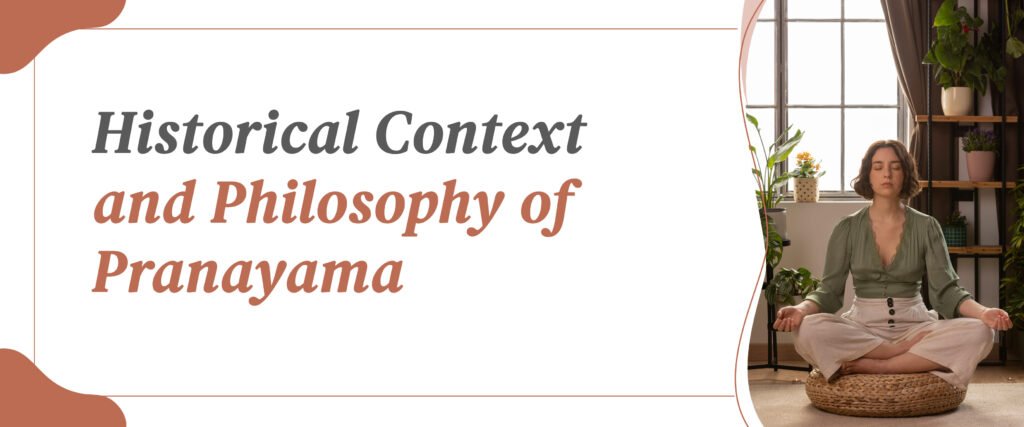
Pranayama techniques, an ancient practice, connect breath control to spiritual growth and well-being. It draws on deep wisdom about energy and consciousness. Benefits of breathwork in this context are not only physical but also spiritual.
Understanding Prana and Its Significance in Yoga
Prana is a vital energy that flows through the body. It’s seen as the life force that animates all beings. Pranayama techniques aim to control and direct this energy. They use breath as a tool to influence prana’s flow.
Ancient texts like the Upanishads discuss prana’s importance. They link it to physical health and spiritual awakening, emphasizing the timeless role of Yoga and Breathwork in overall well-being.
Yogis believe managing prana can lead to higher states of consciousness. This idea forms a key part of yoga philosophy, showing the deeper benefits of breathwork
Yoga Philosophy and the Science of Breathing
Breath is seen as a bridge between body and mind. Pranayama breathing techniques are one of the eight limbs of yoga outlined in Patanjali’s Yoga Sutras.
This ancient text describes how breath control can calm the mind. It explains that steady breathing leads to mental clarity.
Modern science supports some of these ideas. Research shows that breathwork techniques like deep breathing can reduce stress and improve focus. The benefits of breathwork are also supported by studies highlighting its positive impact on mental and physical well-being
Pranayama techniques vary widely. Some, like Bhramari (Bee Breath), calm the mind. Others, like Kapalabhati, energize the body.
Key Techniques of Pranayama
Pranayama techniques offer several powerful breathwork techniques that can transform your practice. These methods help control the breath and energy flow in the body. Each technique has unique benefits of breathwork for physical and mental well-being, making it an essential part of a holistic wellness routine.
Ujjayi (Victorious Breath) and Its Practice
Ujjayi (Victorious Breath) and Its Practice Ujjayi, also known as “ocean breath,” is a common pranayama technique.
To practice Ujjayi:
- Inhale deeply through the nose
- Exhale slowly through a slightly constricted throat
- Create a soft, ocean-like sound
This pranayama technique helps:
- Calm the mind
- Increase oxygen intake
- Reduce stress
Ujjayi can be used during poses or as a standalone practice. It warms the body and promotes focus, adding to the benefits of breathwork.
Kapalabhati (Skull Shining Breath) Explained
Kapalabhati is an energizing pranayama breathing technique. It involves rapid, forceful exhalations and passive inhalations. To practice:
To practice:
- Sit comfortably with a straight spine
- Take a deep breath in
- Exhale forcefully through the nose, pulling the navel in
- Allow the inhale to happen naturally
- Repeat for 20-30 breaths
This technique:
- Clears the lungs
- Energizes the body
- Improves focus
Kapalabhati is one of the best pranayama techniques for energizing the system. It’s not suitable for those with high blood pressure or heart conditions, but for others it adds huge benefits of breathwork.
Nadi Shodhana (Alternate Nostril Breathing) and Benefits
Nadi Shodhana balances the left and right sides of the brain. It helps reduce stress and anxiety. This is among the most effective pranayama breathing techniques for stress relief.
Benefits include:
- Close the right nostril with your thumb
- Inhale through the left nostril
- Close the left nostril with your ring finger
- Exhale through the right nostril
- Inhale through the right nostril
- Close the right nostril
- Exhale through the left nostril
- Repeat for several rounds
This breathwork technique is safe for most people and can be practiced daily, further proving the many benefits of breathwork.
Bhastrika (Bellows Breath) and its Effects
Bhastrika (Bellows Breath) and its Effects Bhastrika is a powerful energizing pranayama technique. It involves rapid inhalations and exhalations.
To practice:
- Sit up straight
- Inhale deeply
- Exhale forcefully
- Immediately inhale forcefully
- Continue for 10 breaths
- Take a few normal breaths
- Repeat for 2-3 rounds
Bhastrika:
- Boosts metabolism
- Increases oxygen in the blood
- Clears the mind
This is one of the more advanced pranayama techniques and is not suitable for those with heart problems or high blood pressure, but it delivers incredible benefits of breathwork when practiced safely.
Bhramari (Bee Breath) for Calming the Mind
Bhramari, or bee breath, creates a calming vibration in the body. This pranayama breathing technique highlights the benefits, particularly in reducing anxiety
To practice:
- Sit comfortably and close your eyes
- Place your fingers on your ears
- Inhale deeply
- Exhale while making a humming sound
- Feel the vibration in your head
- Repeat for 5-10 breaths
Bhramari is particularly effective for reducing anxiety. It helps:
- Relieve tension
- Improve focus
- Prepare for meditation
This breathwork technique can be practiced anytime to promote relaxation and inner calm. Regular practice brings lasting benefits of breathwork for mental health.
Physiological Effects of Breathwork
Breathwork techniques have profound effects on the body’s systems. These practices influence respiratory function, cardiovascular health, and the nervous system. They also play a key role in managing stress-related conditions and highlight the science-backed benefits of breathwork.
Impact on Respiratory Function and Cardiovascular Health
Pranayama techniques improve lung capacity and breathing efficiency. Regular practice strengthens respiratory muscles and increases oxygen uptake. This leads to better overall respiratory function.
Some pranayama breathing techniques may help balance blood pressure, showing the medical benefits of breathwork. Pranayama techniques improve lung capacity and breathing efficiency. Regular practice strengthens respiratory muscles and increases oxygen uptake. This leads to better overall respiratory function.
Breathwork techniques also affect heart health. It can lower blood pressure and reduce the risk of cardiovascular disease. Slow, deep breathing activates the parasympathetic nervous system, which slows heart rate and promotes relaxation.
Influence on the Nervous System and Energy Channels
Pranayama breathing techniques affect the autonomic nervous system, which controls involuntary body functions. It can help balance the sympathetic (fight-or-flight) and parasympathetic (rest-and-digest) responses. Regular practice provides multiple benefits of breathing techniques on mental clarity and energy balance.
Yogic techniques have a direct impact on the nervous system. They can calm the mind and reduce stress by activating the parasympathetic response.
In philosophy, breathing techniques are believed to influence energy channels called nadis. These channels distribute vital energy throughout the body, and regular pranayama practices may help clear blockages. The benefits of breathwork also include improved energy flow, mental clarity, and reduced stress.
Breathwork Techniques and Management of Stress-Related Conditions
Breathwork techniques are a powerful tool for managing stress. They help lower cortisol levels, promote calm, and support relaxation. By regulating breath, these pranayama breathing techniques can shift the body from stress to relaxation, showcasing the stress-relief benefits of breathwork.
When combined with gentle evening practices, such as those outlined in yoga routines that improve sleep quality, the effects of breathwork can become even more restorative, making it easier to unwind and reset both body and mind.
Pranayama techniques may help with various stress-related conditions:
- Insomnia
- Chronic pain
- Digestive issues
- Headaches
By regulating breath, these pranayama breathing techniques can shift the body from a state of stress to one of relaxation. The benefits of breathwork can also improve overall health and well-being.
Integrating Pranayama with Yoga Asanas
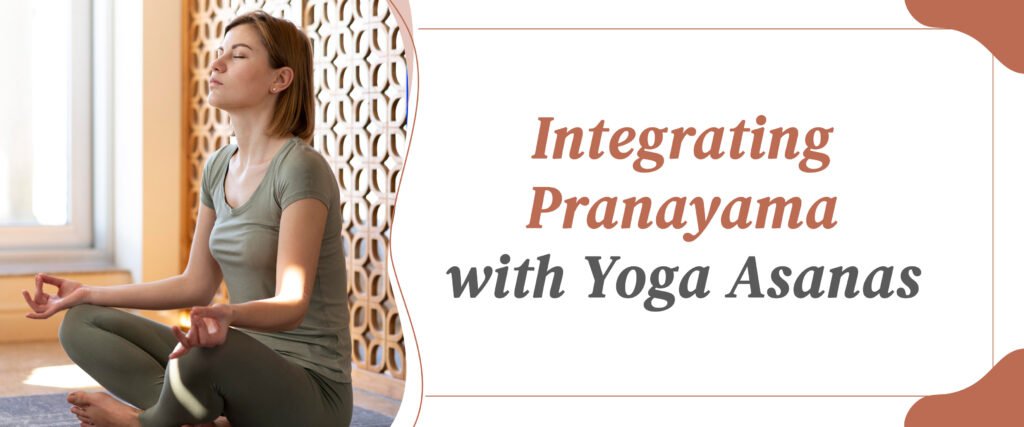
Pranayama techniques and asanas work together to create a complete practice. Mindful breathing enhances physical postures, while consistent practice leads to progress. Adapting breath practices ensures everyone can enjoy the benefits of breathwork.
Enhancing Asanas Through Mindful Breathing
Mindful breathing improves yoga postures. Inhaling deeply creates space in the body, allowing for better alignment and stretch. Exhaling fully helps release tension and deepen poses, adding to the many breathwork techniques.
In standing poses, steady breath aids balance. For twists, inhaling lengthens the spine while exhaling deepens the rotation. During backbends, smooth breathing helps manage discomfort and highlights the calming.
Breathing techniques and mindfulness keep the mind focused on the present moment. This reduces distractions and improves concentration during practice, which further enhances the benefits of breathwork for both body and mind.
Consistency and Progression in Practice
Regular pranayama techniques practice leads to noticeable improvements. Start with simple breathwork techniques like deep belly breathing for 5–10 minutes daily to experience the foundational benefits of breathwork.
Gradually increase duration and complexity. Move on to more advanced pranayama breathing techniques like alternate nostril breathing as comfort grows, unlocking even deeper.
Tracking progress helps maintain motivation. Keep a log of practice times and any changes in breathing capacity or overall well-being to clearly see the long-term.
Combine pranayama breathing with asanas in a balanced routine. Begin with breathwork, then move through poses, ending with relaxation and more breath exercises for maximum benefits of breathwork.
Dealing with Physical Limitations: Back Pain and Respiratory Disorders
Disorders
People with back pain can modify pranayama techniques. Seated positions may be uncomfortable, so lying down or using props for support is advised. Practicing gentle techniques can still provide significant benefits of breathwork.
For those with bronchial asthma or chronic obstructive pulmonary disease, gentle techniques are best. Slow, controlled breathing helps manage symptoms and improve lung function, making the accessible to everyone.
Simple methods like diaphragmatic breathing can be done in any position. This makes pranayama breathing techniques available even with physical limitations, ensuring the healing are not missed.
Always consult a healthcare provider before starting advanced pranayama techniques with a medical condition. They can offer personalized advice on safe practice methods and guide you toward the right techniques for the long-term.
The Holistic Benefits of Breathwork Techniques

Benefits of breathwork offer a range of positive effects on mental, physical, and spiritual well-being. It impacts the body and mind in many ways, promoting balance and overall health.
Mental Clarity, Cognitive Function, and Emotional Balance
Breathwork techniques can sharpen mental focus and boost cognitive abilities. Many people report feeling more alert and clear-headed after pranayama breathing techniques sessions. The benefits of breathwork show how controlled breathing helps regulate emotions.
Controlled breathing also helps regulate emotions. It can calm the nervous system, reducing stress and anxiety. This emotional balance often leads to better decision-making and problem-solving skills.
Regular breathing techniques may improve mood and lessen symptoms of depression. The practice encourages mindfulness, helping practitioners stay present and aware of their thoughts and feelings.
Promoting Relaxation and Inner Peace
Slow, deep breaths activate the body’s relaxation response. Many find that techniques help them unwind after a long day. The calming benefits of breathwork improve sleep quality and peace of mind.
Many find that help them unwind after a long day. It can ease muscle tension and promote better sleep quality. Some techniques, like alternate nostril breathing, are known for their soothing effect.
an also boosts overall quality of life. It gives practitioners a way to manage stress and find moments of tranquility in busy days. This can lead to greater life satisfaction and well-being.
Spiritual Growth and Self-Discovery through Breath
Breathwork and mindfulness play a key role in many spiritual practices. It’s seen as a way to connect with one’s inner self and the wider universe. The benefits of breathwork are also believed to help balance the body’s energy centers or chakras
Through pranayama breathing techniques, many people report experiences of self-discovery. The practice can bring subconscious thoughts and feelings to the surface. This awareness can lead to personal growth and transformation.
Breathwork practices are often seen in meditation to deepen the practice. It can help quiet the mind and open up new levels of consciousness. Some practitioners describe feeling a sense of unity or oneness during sessions.
Pranayama offers many benefits for physical health, mental well-being, and spiritual growth. Different techniques suit various needs and skill levels.
Frequently Asked Questions
-
What are the physical health benefits of practicing Pranayama in yoga?
Pranayama breathing techniques improve lung capacity, reduce blood pressure, and boost immunity. These breathwork techniques also support better digestion and posture, delivering more benefits to the body.
-
How can Pranayama influence mental and emotional well-being?
Pranayama for stress relief helps reduce anxiety and improves focus. Breathwork and mindfulness together promote calmness and emotional balance. The benefits of breathwork in this area include sharper focus, reduced stress, and improved resilience.
-
Which Pranayama techniques are best for beginners and why?
Bhramari (Bee Breath) and diaphragmatic breathing are best pranayama techniques for beginners as they are simple, calming, and great for stress relief.
-
What are the differences between various types of Pranayama and their specific benefits?
Kapalabhati energizes, while Alternate Nostril Breathing calms. These pranayama techniques balance breath and mind in unique ways. Each of these breathwork techniques offers unique benefits of breathwork depending on whether energy or relaxation is needed.
-
How does yogic breathwork enhance meditation and spiritual practices?
Breathwork and mindfulness quiet the mind, making meditation deeper. Advanced pranayama techniques can support inner awareness and focus.
-
Can Pranayama be used as a therapeutic tool, and if so, in what ways?
Yes, pranayama for stress relief helps manage insomnia, anxiety, and asthma. These breathwork techniques calm the nervous system, delivering important benefits of breathwork for those with stress-related conditions.
-
What are some advanced Pranayama techniques and their benefits?
Advanced pranayama techniques like Bhastrika boost energy and mental clarity. They are ideal once basic pranayama techniques are mastered. With regular practice, they provide lasting benefits for body and mind.
-
Can breathwork be combined with other yoga practices for better results?
Yes, combining yoga poses for stress relief with pranayama breathing techniques enhances both physical and mental benefits. This combination maximizes the benefits of breathwork for holistic well-being.
-
How long should I practice Pranayama daily to see results?
Practicing pranayama techniques for 10–15 minutes daily improves focus, calm, and breath control.
-
Is Pranayama suitable for all age groups and fitness levels?
Yes, even simple breathwork techniques and beginner-level pranayama breathing techniques are safe for all ages when done mindfully. This makes the practice accessible and highlights universal benefits of breathwork.

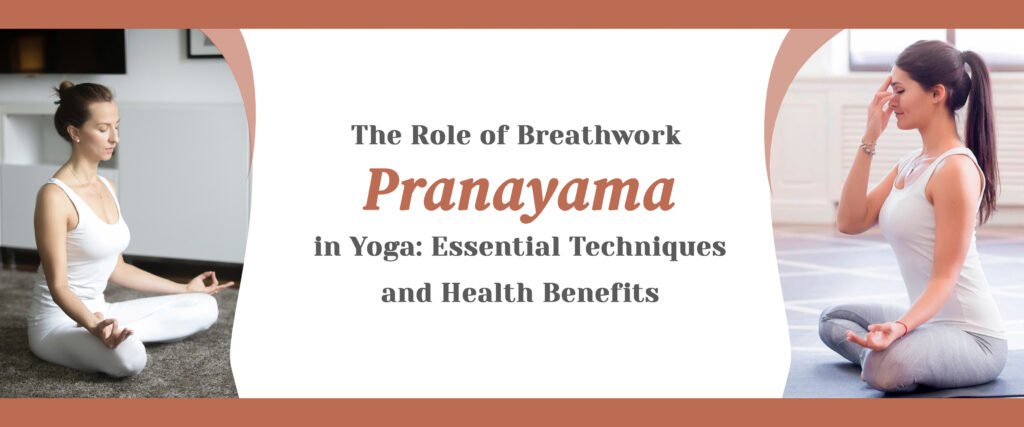
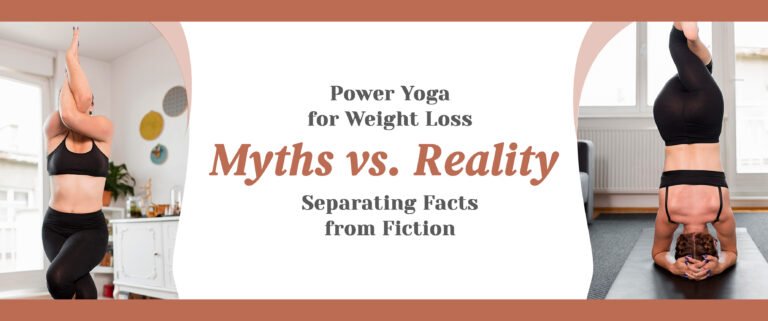
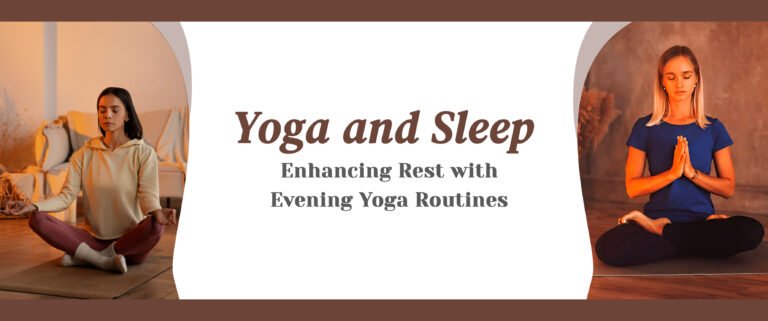
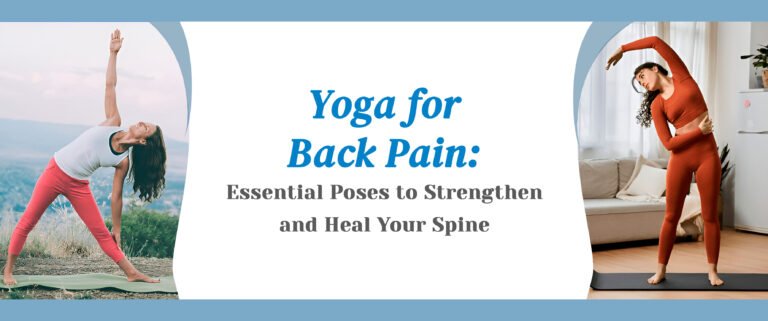
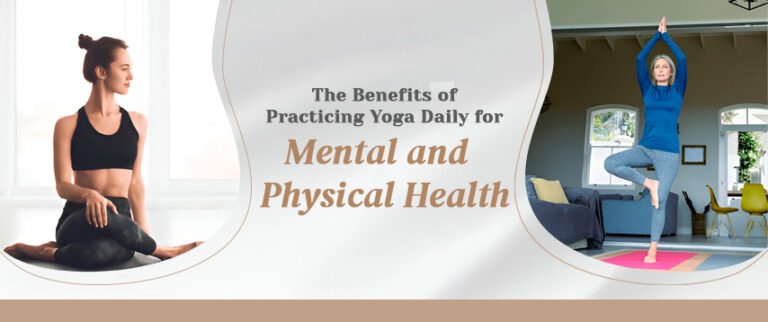

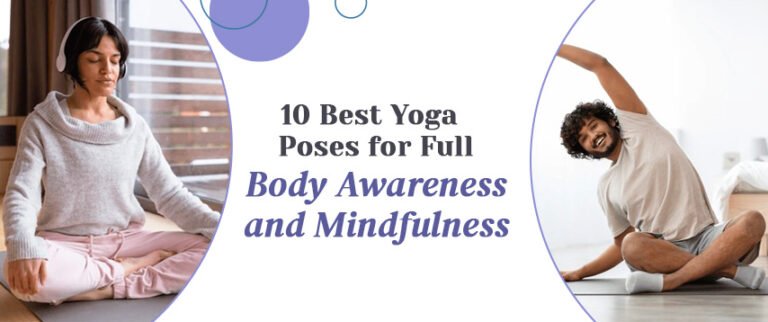
3 Comments
Pingback: योग के लाभ: दैनिक योग के फायदे – मन और शरीर के लिए
Pingback: वजन कमी करण्यासाठी पॉवर योग: मिथक विरुद्ध वास्तविकता
Pingback: चांगली झोप मिळवण्यासाठी योग: संध्याकाळी योगाने विश्रांती वाढवा